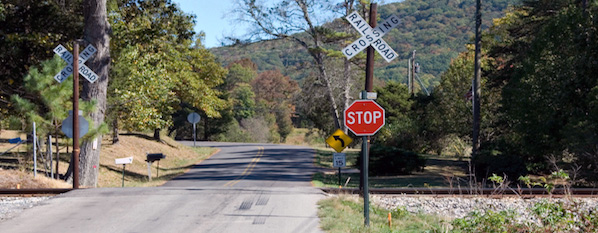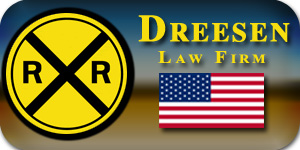Railroad Crossing Accident Attorney

There are nearly 140,000 railroad crossings on public roads in the United States. Only about 50,000 crossings have gates. Just over 23,000 have flashing lights. Less than 1,200 railroad crossings have a traffic signal (flashing lights), wigwag and bells. The Federal Railroad Administration Office of Safety Analysis reports nearly 2,000 accidents between trains and cars/trucks at railroad crossings.
A car or truck is no match for a train. Modern diesel locomotives (the “engines of a train”) can weigh more than 700 tons. A typical automobile weighs little more than 1.5 tons. The destructive power of a train hitting a car is similar to that of a car hitting an aluminum can. When a car or truck is involved in an accident with a train, the results can be tragic. Hundreds of train crossing accidents each year result in death. Thousands more cause serious personal injuries.
Railroad companies have a duty under the law to maintain crossing safety and take reasonable precautions to protect the public from dangerous conditions. When a railway company fails to fulfill its legal duty to protect public safety, it may be held liable for the personal injury and wrongful death damages people are caused to suffer as a result.
An experienced railroad crossing accident attorney law firm can protect your legal rights, help you recover the financial compensation you and your family deserve, and send a message to the railroad company that public safety must always be its primary concern.
We will find the cause of your accident. If you or a loved one has been the victim of railroad crossing accident anywhere in the United States, contact us right away for a free, no-obligation consultation with a top national railroad accident attorney.
The following are just some of the causes of railroad crossing accidents that involve the negligence of railroad companies and/or railroad employees:
Problems with the Railroad Crossings
- Railroad crossing sign hidden by overgrown tree branches, bushes or weeds
- Railroad crossing sign broken or missing
- Warning not marked properly on road/highway
- Railroad crossing lights broken or missing
- Railroad crossing gate broken (or no gate at crossing)
- Railroad crossing signal not working (or no signal at crossing)
Negligence of Railroad Employees
- Overtired, sleeping or passed-out train engineer
- Careless or intoxicated train engineer or railroad employees
- Failure to sound train horn signal
- Failure to properly inspect train, track and/or rail
- Improper train/rail switching
- Train going too fast (or rail speed limit set too high)

